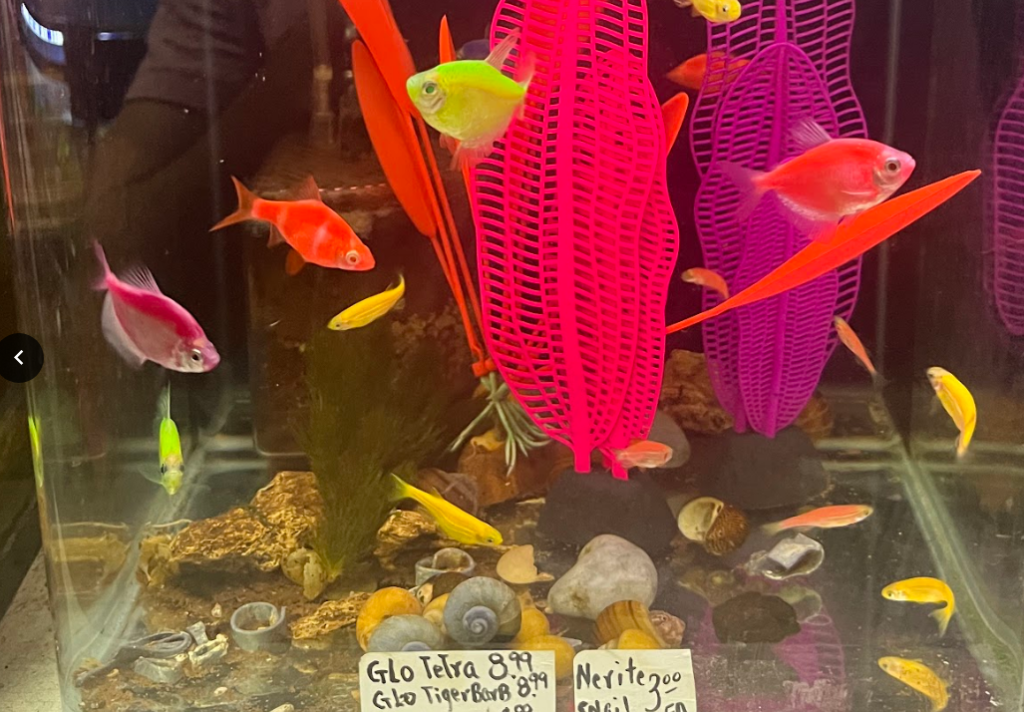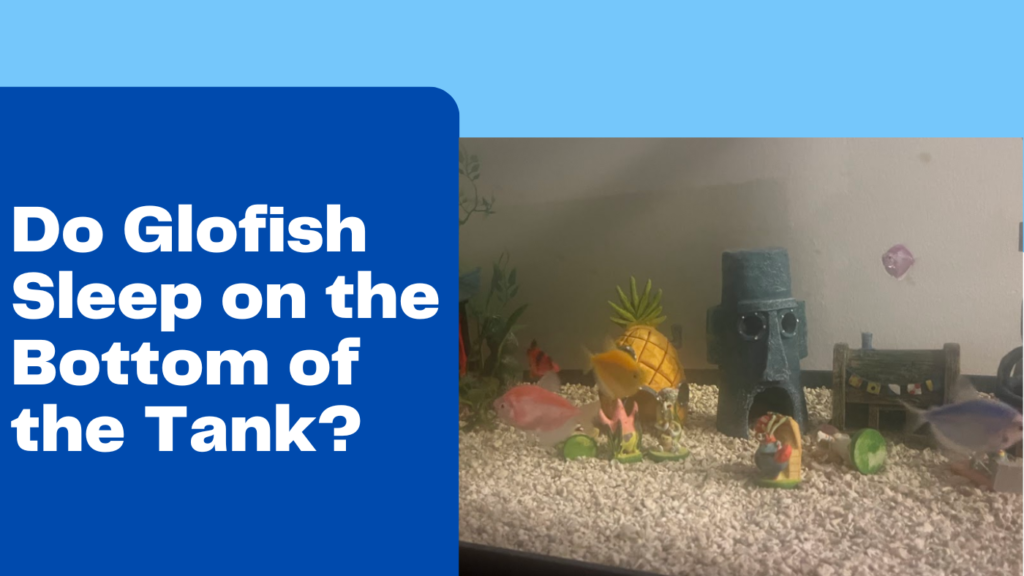If you notice your glofish at the bottom of your tank, you probably have some questions. Is it normal, are they sleeping? Today’s article will answer many of these questions that you might have.
Do glofish sleep on the bottom of tank?
Yes, it is very common for glofish to sleep on the bottom of the tank. While they don’t completely fall asleep, they do rest at the bottom.
What does a sleeping glofish look like?
While glofish don’t have eyelids, there are still some common signs that indicate they are resting/sleeping.
When a glofish rests at the bottom of the tank, they usually reduce their activity and stop swimming. They mostly just float in place or swim very slowly. This helps slow down their metabolism.
You might also notice that their gills move less frequently when they rest because they slow down their breathing.
Some glofish might also rest around or inside of decorations in your tank. This is natural as the glofish decorations provide cover from other fish and make them feel safe. Decorations also help reduce stress in glofish.

Glofish usually sleep on the bottom after a period of swimming around.
Glofish prefer to sleep when there is no light. This is why I recommend that you have your glofish led light turned off for at least 8-10 hours per day. You can learn more in my article on do glofish need light at night?
Why do glofish sleep at the bottom of the tank?
Glofish sleep at the bottom of the tank because there is usually less activity going on at the bottom. While most fish chase each other around the middle or top of the tank, other fish can get their rest at the bottom.
They might also like the bottom of the tank because there are more decorations and accessories where they can hide.
That being said, there are still some glofish that might be more comfortable sleeping near the top of the tank.
Should I be worried if my glofish sleeps at the bottom?
Most of the time, there is no need to worry if your glofish stays at the bottom for long periods of time. As you read above, it is a very common behavior. It is also more common if you have other bottom feeder fish in your tank, such as algae eaters.
That being said, if your glofish habitually stays on the bottom, they might have an underlying disease.
You should keep an eye out for any of the following symptoms:
Erratic swimming
If your glofish starts swimming in unusual swimming patterns, it could be a cause for concern. They might start swimming sideways, or even swimming upside down.
This should not be confused with normal chasing behavior.
Not eating
If your glofish is staying at the bottom of the tank and not eating, it could also be a sign that they are suffering from a disease. They could also be intimidated by another fish. If you suspect this is the cause, you should try placing food in different parts of the tank at the same time.
Tail nipping
If one of your glofish is regularly nipping other fish’s fins or getting nipped themselves, it could be a sign of stress.
Fast breathing
When a glofish sleeps at the bottom of a tank, they usually slow down their breathing. If you notice that your glofish is breathing faster and moving their gills rapidly, it could be a sign that there isn’t enough oxygen in the tank or that the water quality is bad. You can improve oxygen levels in the water with a glofish bubbler.
Fast breathing could also mean that you don’t have the right pH for your glofish tank.
Irregular growth
If you notice that your glofish has an irregular growth or lump on their belly or head, it could be a cause for concern.
If you notice that your glofish has any of the following symptoms, you should perform a water changer. You should also check the temperature and make sure that the water is around 78 degrees fahrenheight.
Conclusion
As you read above, it is perfectly natural for glofish to sleep at the bottom of the tank. It provides a sense of comfort and protection.
As long as your glofish doesn’t stay at the bottom 24/7 and still swims around the tank when they are awake, your glofish should be fine.
If your glofish does exhibit changes in behavior, they could be staying at the bottom due to an illness or improper water conditions.
